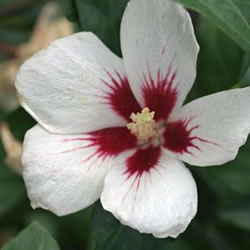Self Sufficient Garden Shrubs
Some of the most popular garden shrubs like roses and buddleias require quite a lot of attention. Regular pruning is necessary for many of them to remain looking good, and others may be prone to pests and diseases, which require time and effort to prevent and eliminate.
Fortunately, there are many low maintenance ones that are just as attractive and almost trouble-free.
You can choose from hundreds of well behaved compact shrubs that will not require frequent pruning or hacking back. Check with your local garden center that the ones you select aren’t susceptible to diseases, and won't need regular pruning or become bare and leggy at the base with all the flowers at the top.
Viburnum tinus is useful for its autumn and winter flowers, but it can grow tall and require pruning to keep it compact. Many hebes are naturally compact and so require little pruning, most have pretty flowers but some need protection during cold winters.
Low Maintenance Shrubs...
|
Flowering Cistus |
Foliage Aucuba japonica |
Rose of Sharon...

This is an outstanding flowering shrub that can be massed, planted in groups or used as a specimen. It is extremely tolerant of summer heat and humidity and larger flowers may be obtained by pruning back hard to 2-3 buds at the beginning of springtime.
Planting...
Choose and plant your shrubs wisely as they will be in position for many years to come, so plant them carefully and take time to prepare the ground thoroughly.
Water the pots and let them drain. Position them where you think they should be in the border. Check the likely size on the label or in a book, then revise your spacing if necessary.
If the spacing seems excessive initially, leaving large gaps, you can always plant a few extra inexpensive shrubs between them to discard when they become crowded.
If planting in spring or summer, apply a balanced fertilizer according to the manufacturers instructions; if planting at any other time, wait until spring to apply. Hoe or rake it into the surface then water thoroughly.
Dig a hole large enough to take the rootball. Stand the plant in the hole and use a cane or stick to check that the plant will be at the same depth as it was in the pot. Add or remove soil as necessary.
Carefully tease out some of the roots if they tightly wound round the inside of the pot. This will encourage them to grow out into the surrounding soil and become quickly established.
Return the soil and firm it well around the roots to steady the shrub in wind and to eliminate large pockets of air that might allow the roots to dry out. Keep it watered during dry periods to begin with; once established, they should rarely require watering.
Gardening Tools › Shrubs








New! Comments
Have your say about what you just read! Leave me a comment in the box below.